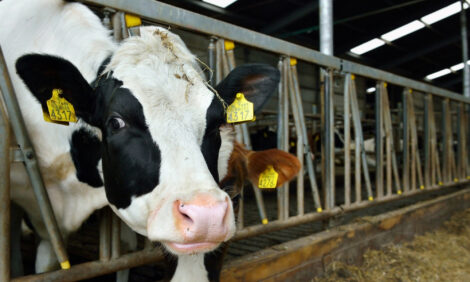



Study: Organic mineral sources can improve health & performance of stressed beef calves
Calves are stressed during weaning and shipping which elevates cortisol levels and results in immunosuppressionWeaning, shipping, and commingling are some of the greatest stressors for calves during the beef production chain. Feedlots and stocker operations know all too well the impact these stressors have on animal health and performance. Bovine respiratory disease (BRD) complex is strongly associated with these stressors leading to increased morbidity and decreased feed intake and growth.
Stress and the ensuing increase in the stress hormone cortisol have negative effects on immune function and the ability of calves to combat BRD pathogens. Calves undergoing stress during weaning and shipping to a new location have elevated cortisol levels resulting in immunosuppression.
The immune system requires energy, protein, vitamins, and minerals to function properly, but newly arrived calves usually have depressed feed intake resulting in less than adequate consumption of nutrients. Less is known about the mineral requirements of stressed beef calves and the impact of previous mineral nutrition and current mineral status have on the response of the immune system to BRD pathogens. Minerals naturally found in feeds are part of the feed matrix and generally complexed with organic molecules such as proteins.
Mineral supplementation is generally in the form of oxides, sulfates, and chlorides termed inorganic minerals, which generally have lower bioavailability than organic minerals. In the last 30 years, supplements with minerals complexed to an organic molecule, often an amino acid, have become commercially available. These organic minerals may enhance health and performance of cattle by increasing availability and functionality of the mineral in the animal’s body.
A recent study evaluated the use of organic versus inorganic minerals in a diet for stressed calves. The organic mineral diet contained zinc, copper, manganese, and cobalt complexed with an amino acid whereas the inorganic mineral diet contained sulfate forms of these minerals. Heifers were sourced from several sale barns over a 3-day period and commingled, and considered to be high-risk for BRD. Calves were fed bermudagrass hay free choice and a grain supplement at 3 lb/hd/day. The overall morbidity was 52% with heifers fed the organic mineral at 46% compared with 58% for the inorganic mineral. There was no difference between forms of mineral in the number of cattle retreated for BRD. Additionally, heifers fed the organic mineral gained 1.72 lb/d compared with 1.54 lb/d for the inorganic mineral.
This level of improvement in health and performance is not always evident in research studies comparing organic and inorganic mineral sources. A couple of important factors are the level of BRD morbidity overall and the mineral status of calves at arrival to the feedlot or stocker operation.
In the study discussed above, the level of morbidity was quite high with over 50% of the heifers being treated for BRD at least once, and 18% of the heifers were treated at least twice. Additionally, liver biopsies indicated that heifers were marginally deficient in copper, zinc and manganese at arrival.
Although it is difficult to determine mineral status at arrival and the level of BRD morbidity cannot be predicted, the use of organic minerals may be warranted in such situations, but the added expense of organic minerals is not always warranted.



